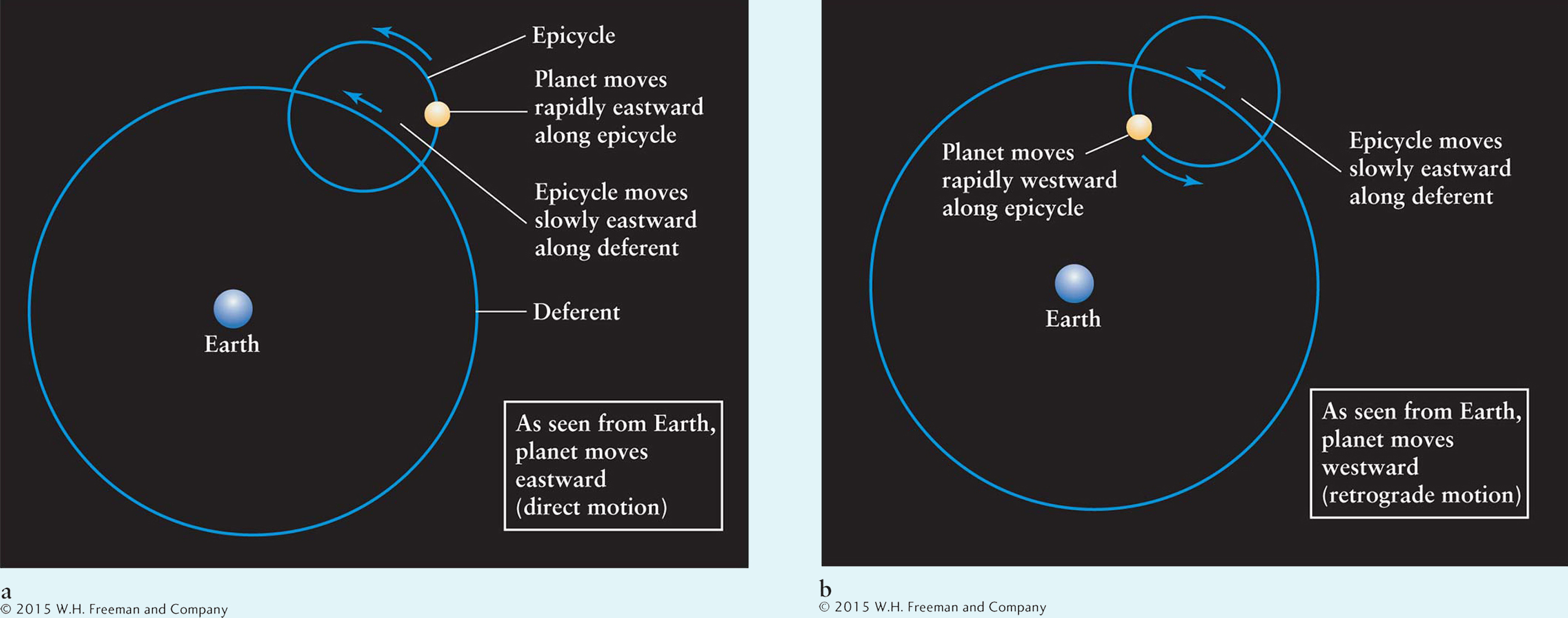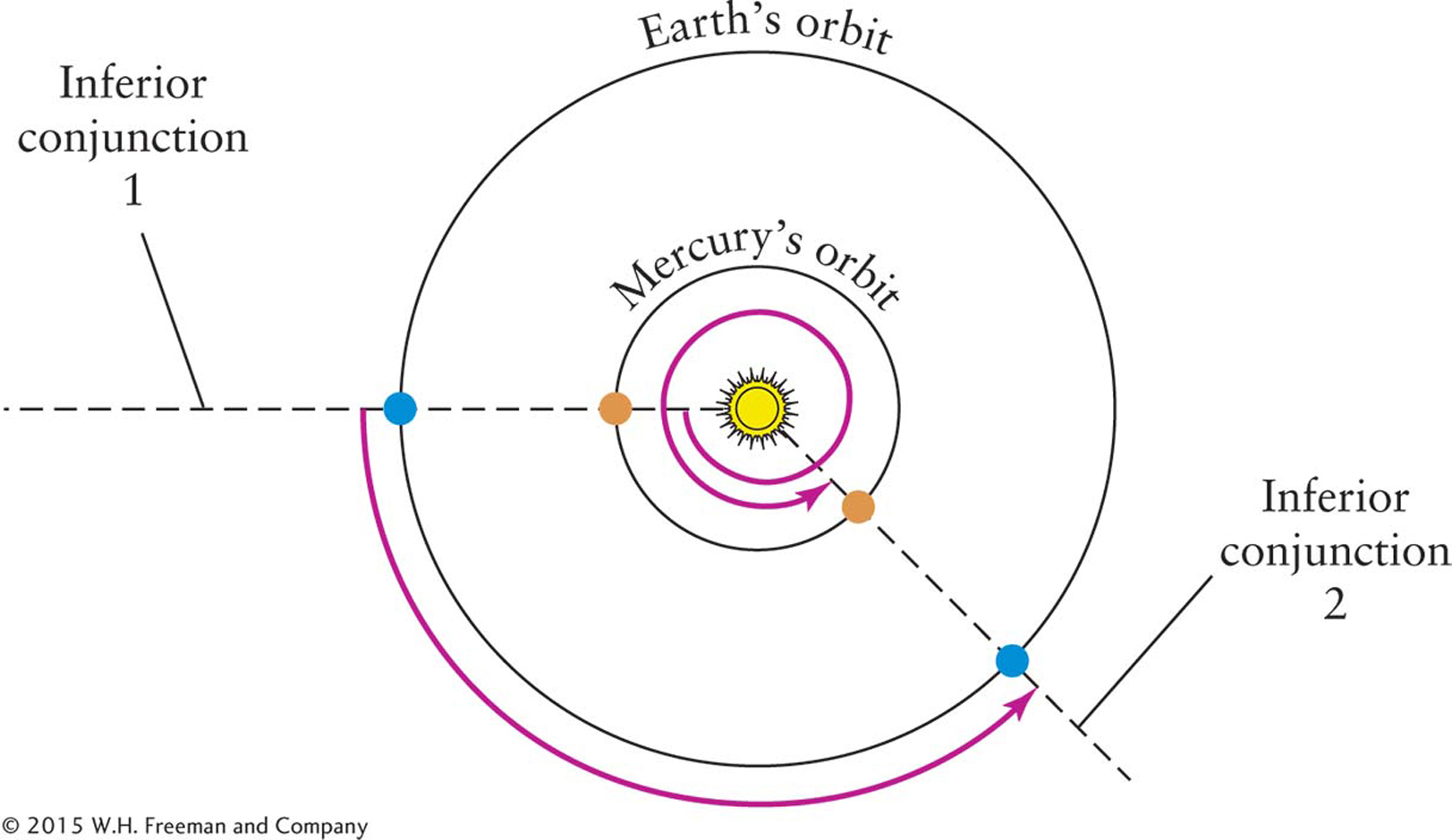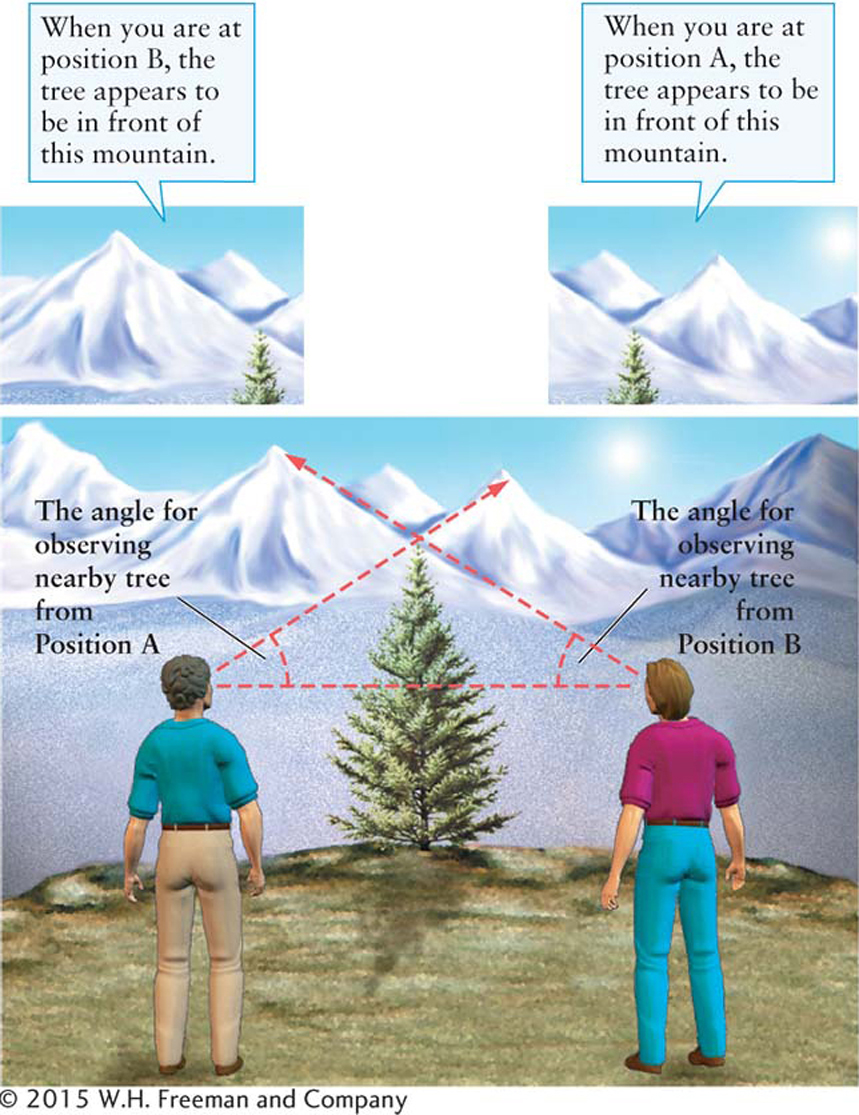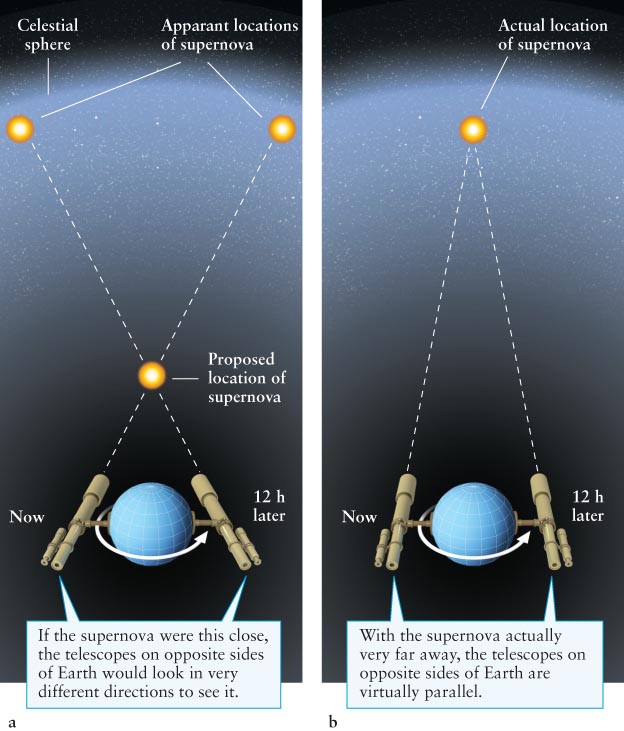CHANGING OUR EARTH-CENTERED VIEW OF THE UNIVERSE
Early Greek astronomers tried to explain the motion of the five then-
2-2 The belief in a Sun-centered cosmology formed slowly
Explaining the motions of the five planets in a geocentric universe was one of the main challenges facing the astronomers of antiquity. The Greeks knew that the positions of the planets slowly shift relative to the “fixed” stars in the constellations. In fact, the word planet comes from a Greek term meaning “wanderer.” They also observed that planets do not move at uniform rates through the constellations. From night to night, as viewed in the northern hemisphere, the planets usually move slowly to the left (eastward) relative to the background stars. This movement is called direct motion or prograde motion. Occasionally, however, a planet seems to stop and then back up for several weeks or months. This reverse movement (to the right or westward relative to the background stars) is called retrograde motion. Both direct and retrograde motions are best observed by photographing (Figure 2-

All planetary motions on the celestial sphere are much slower than the apparent daily movement of the entire sky caused by Earth’s rotation. Throughout a single night it is very difficult to detect motion of the planets among the stars. Therefore, the planets always rise with the stars in the eastern half of the sky and set with them in the western half.
Focus Question 2-2
Referring to Figure 2-
The effort to understand planetary motion—

DISCOVERY 2-1: Earth-Centered Universe
Most of us find it hard to understand why anyone would believe that the Sun, planets, and stars orbit Earth. After all, we know that Earth spins on its axis. We know that the gravitational force from the Sun holds the planets in orbit, just as Earth’s gravitational force holds the Moon in orbit. In childhood these facts become part of our understanding of the motions of the heavenly bodies.
Psychologists call this background information that we use to help explain things a conceptual framework. A conceptual framework contains all of the information we take for granted. For example, when the Sun rises, moves across the sky, and sets, we take for granted that it is Earth’s rotation that causes the Sun’s apparent motion.
Because they did not feel Earth move under their feet, or see any other indication that Earth is in motion, it did not even occur to our distant forebears to consider the possibility that we are in orbit around the Sun. The obvious conclusion for one who has a prescientific conceptual framework, even today, is that Earth stays put while objects in the heavens move around it. This prescientific conceptual framework for understanding the motions of the heavenly bodies was based on the senses and on common sense. That is, people observed motions and drew “obvious,” commonsense conclusions. Today, we incorporate the known and tested laws of physics in our understanding of the natural world. Many of these realities are utterly counterintuitive and, therefore, the conceptual frameworks that we possess are less consistent with common sense than those held in the past. Studying science helps us to develop intuition that is consistent with the actual workings of nature.
Geocentric Explanation of the Planets’ Retrograde Motion The early Greeks, working in what we now know is an incorrect geocentric (Earth-

Most of the time, the motion of the planet on its epicycle adds to the eastward motion of the epicycle on the deferent. Thus, the planet is seen from Earth to be in direct motion (to the left or eastward) against the background stars throughout most of the year (Figure D2-
31
32
2-3 Copernicus devised the first comprehensive heliocentric cosmology
Over the centuries following Aristarchus, increasingly accurate observations of the planets’ locations revealed errors in the predictions of geocentric cosmology. To reconcile that cosmology with the data, more and more complex motions were attributed to the planets. By the mid-
Pursuing the heliocentric cosmology, Copernicus determined, by observations, which planets are closer to the Sun than Earth and which are farther away. Because Mercury and Venus are always observed fairly near the Sun, he correctly concluded that their orbits must lie inside Earth’s orbit. The other planets visible to Copernicus—
33
The geometric arrangements among Earth, another planet, and the Sun are called configurations. For example, when Mercury or Venus is directly between Earth and the Sun (Figure 2-

The angle between the Sun and a planet as viewed from Earth is called the planet’s elongation. A planet’s elongation varies from zero degrees to a maximum value, depending upon where we see it in its orbit around the Sun. At greatest eastern or greatest western elongation, Mercury and Venus are as far from the Sun in angle as they can be. This position is about 28° for Mercury and about 47° for Venus. The superior planets all have maximum elongations of 180°. When either Mercury or Venus rises before the Sun, the planet is visible in the eastern sky as a bright “star” and is often called the “morning star.” Similarly, when either of these two planets sets after the Sun, the planet is visible in the western sky and is then called the “evening star.” Because these two planets are not always at their greatest elongations, they are often very close in angle to the Sun. This positioning is especially true of Mercury, often making it hard to see from Earth. Venus is often nearly halfway up the sky at sunrise or sunset and therefore quite noticeable during much of its orbit. Because they are so bright and sometimes appear to change color due to the motion of Earth’s atmosphere, Venus and Mercury are often mistaken for UFOs. (The same motion of the air causes the road in front of your car to shimmer on a hot day.)

34
35
Planets farther from the Sun than Earth have different configurations. When one of these planets is located behind the Sun, as seen from Earth, that planet is said to be in conjunction. When a planet is opposite the Sun in the sky, that planet is at opposition. It is not difficult to determine when a planet happens to be located at one of the key positions in Figure 2-

It is relatively easy to follow a planet as it moves from one configuration to another. However, these observations alone do not tell us the planet’s actual orbit, because Earth, from which we make the observations, is also moving. Copernicus was therefore careful to distinguish between two characteristic time intervals, or periods, of each planet.
Recall from Chapter 1 that a planet’s sidereal period is the time it takes that body to make one complete orbit of the Sun as measured with respect to the distant stars; an observer fixed at the Sun’s location watching that planet would see it start at one point on the celestial sphere, go around the sphere, and end at the same place it started from. The sidereal period or orbit is the length of a year for each planet.
Focus Question 2-3
Why do I say “of the same type” in this paragraph?
The other useful time interval that Copernicus used is the synodic period. The synodic period is the time that elapses between two successive identical configurations as seen from Earth. This period can be from one opposition to the next, for example, or from one conjunction to the next (of the same type, Figure 2-
Thus, nearly 500 years ago, Copernicus was able to obtain the first six entries shown in Table 2-
|
|
Synodic (year) |
Sidereal (year) |
|---|---|---|
|
Mercury |
0.318 |
0.241 |
|
Venus |
1.599 |
0.616 |
|
Earth |
— |
1.0 |
|
Mars |
2.136 |
1.9 |
|
Jupiter |
1.092 |
11.9 |
|
Saturn |
1.035 |
29.5 |
|
Uranus |
1.013 |
84.0 |
|
Neptune |
1.008 |
164.8 |
|
|
Measurement (AU) |
|
|---|---|---|
|
|
By Copernicus |
Modern |
|
Mercury |
0.38 |
0.39 |
|
Venus |
0.72 |
0.72 |
|
Earth |
1.00 |
1.00 |
|
Mars |
1.52 |
1.52 |
|
Jupiter |
5.22 |
5.20 |
|
Saturn |
9.07 |
9.54 |
|
Uranus |
Unknown |
19.19 |
|
Neptune |
Unknown |
30.06 |
Copernicus presented his heliocentric cosmology, including supporting observations and calculations, in a book entitled De revolutionibus orbium coelestium ( On the Revolutions of the Celestial Spheres), which was published in 1543, the year of his death. His great insight was the conceptual simplicity of a heliocentric cosmology compared to geocentric views, especially in explaining retrograde motion. However, Copernicus incorrectly assumed that the planets travel along circular paths around the Sun. Without using epicycles similar to those used in geocentric theory (see Figure D2-
36
2-4 Tycho Brahe made astronomical observations that disproved ancient ideas about the heavens

In November 1572, a bright star suddenly appeared in the constellation Cassiopeia. At first, it was even brighter than Venus, but then it began to grow dim. After 18 months the star faded from view.
Modern astronomers recognize this event as a supernova explosion, the violent death of a certain type of star (see Chapter 11). In the sixteenth century, however, the prevailing opinion was quite different. Teachings dating back to Aristotle and Plato argued that the heavens were permanent and unalterable. From that perspective, the “new star” of 1572 could not really be a star at all, because the heavens do not change. Many astronomers and theologians of the day argued that the sighting must be some sort of bright object quite near Earth, perhaps not much farther away than the clouds overhead. A 25-
Consider what happens when two people look at a nearby object from different places—
Focus Question 2-4
Describe a simple experiment to demonstrate that your eyes (and, implicitly, your brain) use parallax to determine distances.

Tycho reasoned as follows: If the new star is nearby, its position should shift against the background stars over the course of a night (Figure 2-
Insight Into Science
Take a Fresh Look When a scientific concept is hard to visualize, try another perspective. For example, a planet’s sidereal period of orbit is easy to understand when viewed from the Sun but more complicated as seen from Earth. The synodic period of each planet, on the other hand, is easily determined from Earth. As we will see, especially when we study Einstein’s theories of relativity, each of these perspectives is called a frame of reference.
From 1576 to 1597, Tycho made comprehensive observations, measuring planetary positions with an accuracy of 1 arcminute (arcmin; see Section 1-
37
